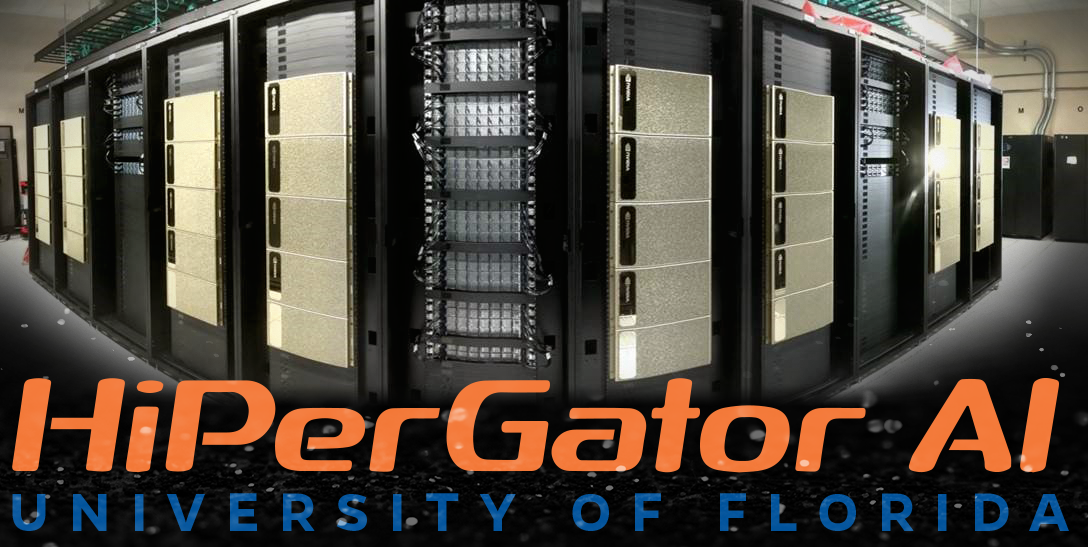
The University of Florida supercomputer is a cluster that includes the latest generation of processors and offers nodes for memory-intensive computation. HiPerGator’s high-performance storage systems can be accessed from diverse interfaces, including Globus and other tools.
UFIT Research Computing maintains the cluster and its many parts, allowing researchers to focus on their research instead of hardware and software maintenance. UFIT Research Computing supports supports a significant number of widely-used applications. Our staff is happy to evaluate and explore additional applications for UF’s research needs.
HiPerGator 3.0
HiPerGator 3.0 grew over a year of time, adding GPUs, storage and new processors. The GPUs went into production, the new Blue storage replaced the old /ufrc filesystem, and replacement processors went into production in January 2021.
HiPerGator Evolution
| Phase | Year | Cores |
RAM/core |
| HiPerGator 1.0 Retired |
2013 | 16,000 AMD |
4GB |
| HiPerGator 2.0 | 2015 | 30,000 Intel |
4GB |
| HiPerGator 3.0 | Jan 2021 | 30,720 AMD EPYC 7702 Rome 2.2 GHz Cores |
8GB |
| HiPerGator 3.0 | May 2021 | 9,600 AMD EPYC 75F3 Milan 3.3 GHz Cores |
8GB |
- Total of 66,000 cores
- 544 NVIDIA GeForce RTX 2080TI GPU’s
- 48 NVIDIA Quadro RTX 6000 GPU’s
HiPerGator AI NVIDIA DGX A100 SuperPod

- 140 NVIDIA DGX A100 nodes
- 17,920 AMD Rome 7742 cores
- 1,120 NVIDIA Ampere A100 GPUs
- 2.5 PB All-Flash storage
- Over 200 HDR Infiniband and various Ethernet switches for connectivity
- Double precision LinPack (HPL): 13.75 Petaflops
- TOP500 June 2021: #22
- Green500 June 2021: #2
- AI Floating Point Operations: 0.7 Exaflops
The latest NVIDIA GPU technology of the Ampere A100 GPU has arrived at UF in the form of two DGX A100 nodes each with 8 A100 GPUs. UF is the first university in the world to get to work with this technology. Visit the UF Artificial Intelligence Initiative website for more information.
The A100 technical specifications can be found at the NVIDIA A100 Website, in the DGX A100 User Guide, and at the NVIDIA Ampere developer blog.
For A100 benchmarking results, please see the HPCWire report.
